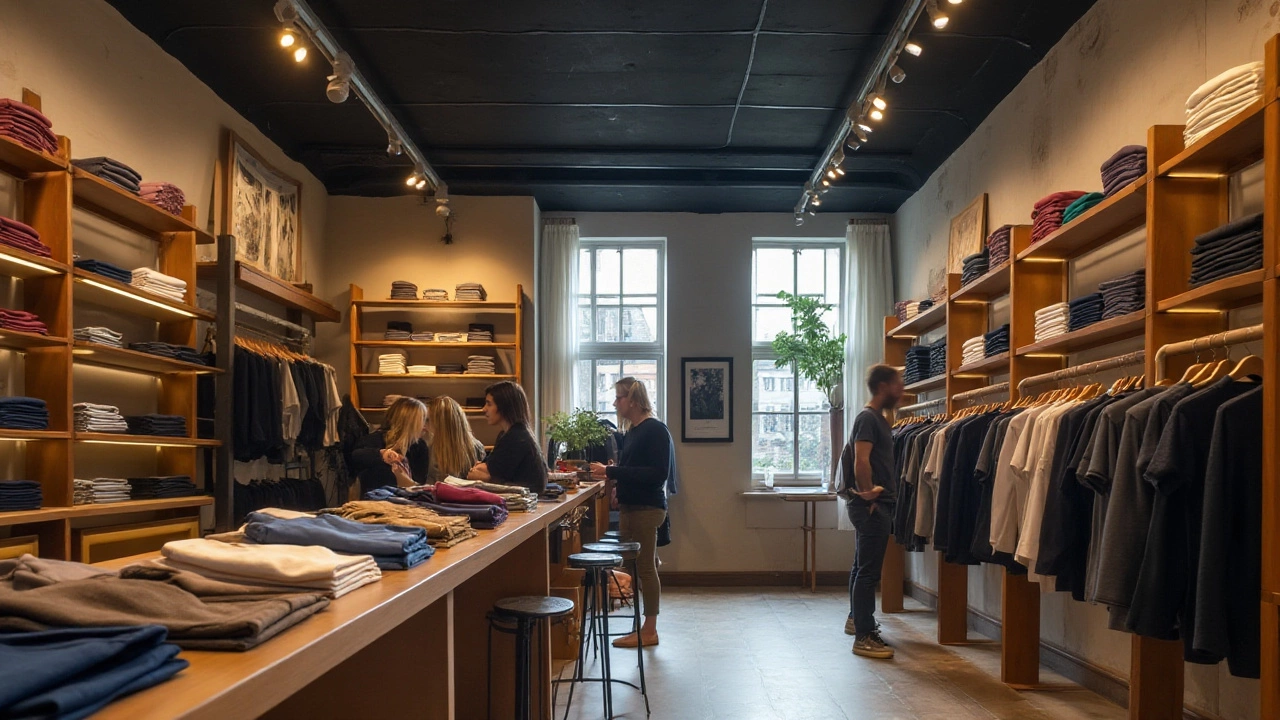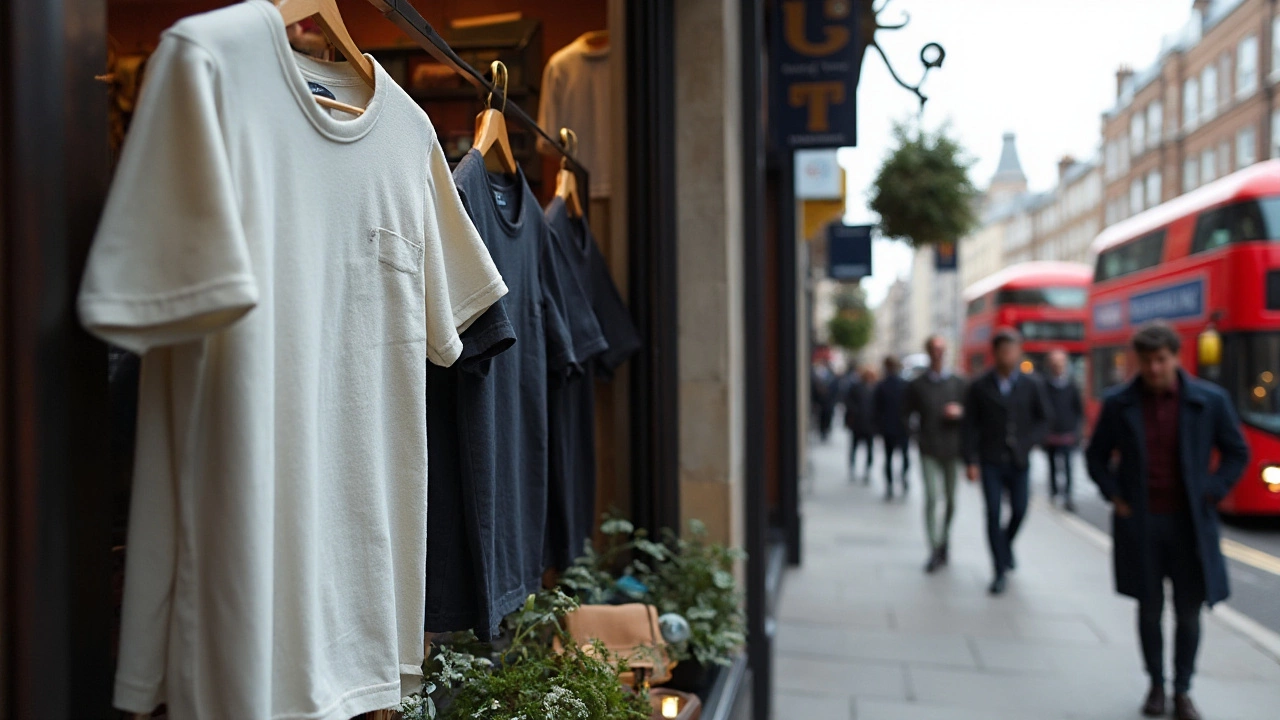A stroll through your favorite clothing store or a quick browse online can leave you wondering why a simple T-shirt can leave such a noticeable dent in your wallet. This curiosity isn't unwarranted, as the reasons behind the cost of T-shirts are as layered as the garment itself. To shed light on this subject, it's essential to dissect the various components that contribute to the price tag.
From the source of fabrics to the ethos of production lines, each factor plays a pivotal role. These elements are often hidden from plain sight, leaving consumers grappling for explanations. Yet, delving into these complexities not only clarifies the price mystery but also guides us towards making savvy shopping decisions. This journey into the world of T-shirts will help unravel the true value within their threads.
- Material Quality and Sourcing
- Ethical Manufacturing Practices
- Brand Influence and Marketing
- Tips for Smart T-Shirt Purchases
Material Quality and Sourcing
Delving into the factors that affect the cost of T-shirts, the first area to explore is the quality of materials and their sourcing. It's an integral aspect that plays a substantial role in determining price. High-quality T-shirts often use materials like organic cotton, Supima cotton, or luxurious fibers like merino wool and bamboo. These materials are prized not only for their comfort and durability but also for their environmental impact. Organic cotton, for instance, eschews the use of harmful pesticides and fertilizers, aligning with sustainable practices that add value to a garment but also increase its cost.
Consider the journey of a cotton T-shirt, starting from the field. Conventional cotton requires significant resources, including water and chemicals, which affect both the environment and farmers. The commitment to sourcing organic cotton requires stringent adherence to standards, from farm practices to cotton processing. This commitment doesn't come cheap. It ensures the material is not only environmentally friendly but often ethically sourced, too. Brands that prioritize these materials must weigh the added costs against the consumer's willingness to pay.
In an era of conscious consumerism, more buyers are shifting their focus toward quality and sustainability rather than seeking bargain buys. This shift reflects a growing awareness of the impact of the fashion industry, often leading to a willingness to invest in garments that support ethical practices. As demand increases, more brands are motivated to source ethically, though this can lead to higher production costs, impacting the retail price of T-shirts.
"Sustainability is no longer about doing less harm. It's about doing more good." – Jochen Zeitz, former CEO of Puma.
The logistics of sourcing fibers also contribute to increased costs. High-quality fibers are not always sourced locally, requiring importation that incurs additional expenses. The supply chain logistics, including transportation, tariffs, and duties, all add to the final cost of a clothing item. Supply chain disruptions, like those experienced during global challenges such as the pandemic, only amplify these costs further. Brands face the dilemma of maintaining quality while coping with these external factors, often influencing how prices are set.
It's essential to recognize that the textile industry, with its complexity and variability, is not just about the end product you see on a hanger. It's about the intricate weave of choices made in material quality and sourcing. Each decision impacts the end consumer, whether through the tactile experience of wearing a soft, well-made T-shirt or through the knowledge that their purchase upholds certain ethical standards. This continual effort to balance quality with cost underlies much of the pricing seen at retail.

Ethical Manufacturing Practices
When you look at the price of a T-shirt today, you’re often paying for more than just the fabric and design. In many cases, the high cost is a reflection of ethical manufacturing practices that ensure fair labor conditions. The global apparel industry, notorious for labor issues, has seen a significant shift over recent years as more brands embrace sustainability and ethical labor. These practices involve ensuring safe working conditions, fair wages, and proper labor rights for the workers involved in producing our clothes. This change isn't just a trend; it's a responsibility that companies are increasingly keen to adopt.
Adopting ethical practices means that companies often incur higher costs. This could involve paying higher wages, improving factory conditions, or even investing in sustainable resources and reducing the environmental footprint. Brands like Patagonia and Everlane, for example, have become pioneers in the realm of transparency and responsibility in fashion. While these initiatives lead to higher production costs, consumers are gradually being made aware of the importance and are often willing to pay the premium for guilt-free shopping.
According to the Fair Wear Foundation, "Ethical production is a pathway to ensure that human rights are embedded in the heart of fashion".
This shift also includes preventing exploitation by offering training programs and enabling workers to develop skill sets that empower them in their respective roles. It's about fostering an environment where workers' voices are heard and respected, significantly improving their quality of life. While the transition to ethical practices can be challenging and financially demanding, it also provides brands with an opportunity for innovation and distinction in a highly competitive market.
Some brands may also tie their ethical manufacturing to other initiatives, such as carbon-neutral manufacturing processes or zero-waste commitments. A focus on eco-friendly practices is checked by third-party certifications like Fairtrade or the Global Organic Textile Standard (GOTS). These certifications ensure that ethical labor practices are not merely a marketing angle but a reality checked by evaluative bodies. Consequently, as consumers, understanding and supporting these practices not only reshapes corporate behavior but also supports the growth of the workers behind the scenes.
A consideration for these practices also extends to learning about countries with sustainable labor systems in place. Countries like Canada and Switzerland are noted for their strong labor rights frameworks, setting examples for the rest of the world. Displaying a commitment to ethically-produced T-shirts often influences consumer perception positively, garnering trust and loyalty from those who value social responsibility. The movement is growing as more consumers start recognizing their power in the retail space, opting to support brands that align with their own values for ethical business practices.

Brand Influence and Marketing
As you pull on a T-shirt emblazoned with a familiar logo, you're not just showcasing your style; you're wearing a piece of a vast marketing strategy. Branding plays a monumental role in the cost of T-shirts and significantly impacts consumer perception. The clout a brand carries can turn a basic cotton tee into a sought-after fashion statement. High-end labels, with their reputation for quality and luxury, often set a premium price for their products. These brands have cultivated trust over time, promising not just a shirt but an experience—the promise of exclusivity, heritage, and status, often backed by impactful stories.
Marketing strategies employed by these brands are just as pivotal as the quality they promise. Be it through celebrity endorsements or social media campaigns, they create a sense of desirability around their products. The same white T-shirt might cost a fraction under a lesser-known label. Yet, it offers the allure of a particular lifestyle or identity, pushing consumers to invest more. A fascinating aspect of brand influence is how it taps into psychology. People often purchase to signal their belonging to a particular social group, even when the actual difference in physical product quality is minimal.
"Branding is not just about being seen, it's about being remembered," points out marketing expert Sarah Jane, emphasizing that the impression a label leaves can legitimize its value.
Consider the storytelling that surrounds each brand. Whether it’s a narrative of sustainability, art, or innovation, they create a compelling reason to choose their T-shirts over a plethora of alternatives. It's not uncommon for brands to highlight their ethical practices, such as fair-trade labor or eco-friendly materials, which justifies the price point. While these claims promote genuine cost factors, they're also sophisticated marketing tools enhancing brand loyalty.
To illustrate how branding and marketing elevate T-shirt prices, imagine two starkly different shopping experiences: purchasing a tee with a distinct swoosh versus a no-name counterpart. The former typically represents a purchase steered by marketing psychology, where perceived brand value trumps the actual fabric quality. In marketing language, this is often labeled as 'a brand's emotional connection with the audience,' vividly captured in the stories they sell.
Over the years, many brands have mastered leveraging digital platforms to tell their stories. Creative advertising campaigns, influencers flaunting their wearables, and customer testimonials forge a connection before you even set foot in a store or visit a product page. Traditional media, like print ads and television commercials, continue to exert influence, but digital realms offer an aspirational and engaging strategy.
To navigate this landscape as an informed consumer requires discernment. While certain brands genuinely deliver enhanced value, some rely heavily on marketing to obscure the fact that the prices they charge go beyond the tangible qualities of their items. By understanding the prowess of brand influence in pricing, not only do you appreciate the threads on your back, but you can also pick the pieces that resonate with your values and identity without merely buying into a manufactured persona.

Tips for Smart T-Shirt Purchases
When wandering down the bustling aisles of T-shirt racks or scrolling through the endless virtual shelves online, one might feel overwhelmed by the options and the varying price points. As the cost of T-shirts climbs, savvy shopping becomes essential to ensure you’re getting the best deal without compromising on quality. The art of smart shopping involves being informed about the intricacies of materials, manufacturing processes, and brand narratives. Start by understanding the fabric composition. Higher quality materials like Pima cotton or organic cotton may cost more upfront but tend to last longer and are softer against the skin.
Brands often charge premium prices for ethically sourced and produced garments, as these processes involve fair wages and sustainable practices which are vital in today's fashion industry. According to the Fair Wear Foundation, a focus on ethical manufacturing not only supports fair labor practices but also ensures better product quality. Pay attention to the manufacturing details too. A T-shirt with double-stitched hems or reinforced seams is usually more durable than one with single-stitched seams. Don’t shy away from performing tactile checks; feeling the fabric or examining the stitching can reveal a lot about potential longevity.
Another tactic is to research and get familiar with trusted brands that balance quality with cost. Many emerging brands offer high-quality clothing at a fraction of the usual price due to minimal marketing and direct-to-consumer models. Be diligent about reading reviews and customer feedback. Past buyers can provide invaluable insights into the fit, quality, and how well a T-shirt holds up after washing. Use these insights to gauge the true value of a purchase, beyond the brand name and price tag.
Online platforms are often rich with user reviews and star ratings; use these to guide your selections. Investigating discount options is another method; end-of-season sales or clearance sections, both online and offline, can yield some hidden gems at a fraction of the price, provided you're flexible with your choices. Always check the return policy in case the T-shirt doesn't meet your expectations on arrival. Technology has enhanced the shopping experience as well, with many apps comparing prices across numerous retailers, so harness this digital advantage to ensure you’re getting the best deal.
"Price should not be the only deciding factor; it’s about finding that perfect balance between cost, quality, and ethical practices," shares Jane Millar, fashion analyst at the Ethical Fashion Forum.Keep an eye out for unique offerings like limited edition designs or collaborations, which although pricier, bring a distinctiveness that mass-produced T-shirts may lack. Finally, consider timelessness and versatility over fleeting trends. A well-made, classic T-shirt is not only a staple but a versatile piece that can be dressed up or down, justifying its place in your wardrobe even with a steeper price tag.

